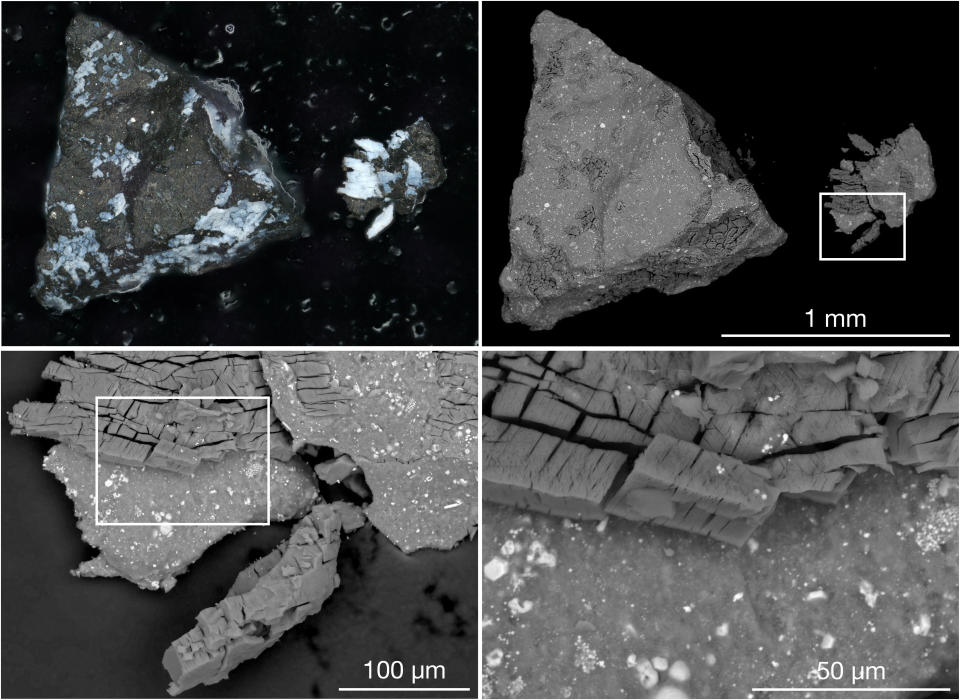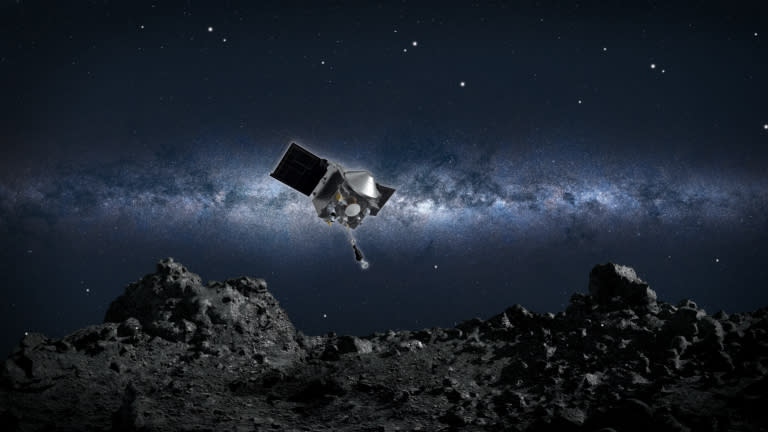On September 24, 2023, NASA’s OSIRIS-REx spacecraft dropped to Earth a capsule containing pure carbonaceous regolith collected from the near-Earth asteroid Bennu. These samples were obtained after the probe made an impressive, seven-year round-trip journey across the solar system.
Ever since these pieces of space rock arrived (about 120 grams of sample, to be exact), scientists have been eagerly awaiting analysis of samples that could tell us what molecules are inside Bennu. They thought Bennu must have been there when our cosmic neighborhood came together, hoping to find clues about prebiotic molecules that could provide insight into the history of our solar system and the origin of life on Earth. Many experts think these samples may contain the seeds of other essential components, such as water, that could contribute to Earth’s habitability if they also made their way to our planet.
“The sample we brought back is currently the largest reservoir of intact asteroid material on Earth,” said Dante Lauretta, co-lead author of the paper and OSIRIS-REx principal investigator at the University of Arizona, Tucson. expression.
Early studies indeed showed OSIRIS-REx samples exhibited evidence of carbon and waterPerhaps more remarkable is the team’s recent and unexpected discovery of magnesium-sodium phosphate. It is an ionic compound composed of magnesium cation (Mg2+) and phosphate anion (PO43-).
Relating to: NASA’s OSIRIS-REx returns samples of asteroid Bennu to Earth after historic 4 billion-mile journey
Magnesium-sodium phosphate can be found in certain minerals and geological formations on Earth, as well as in living organisms where it is present in various biochemical processes and is a component of bones and teeth. But its presence on Bennu surprised the research team because it was not seen in the OSIRIS-REx probe’s remote sensing data prior to sample collection, according to NASA’s press release. Its presence “hints that the asteroid may have broken away from a long-extinct, small, primitive oceanic world,” the team says.
“The presence and state of phosphates, along with other elements and compounds on Bennu, indicate a watery past for the asteroid,” Lauretta said. “Bennu could potentially have once been part of a wetter world. However, this hypothesis requires further investigation.”
The OSIRIS-REx spacecraft obtained a sample of Bennu’s regolith on October 20, 2020, using the Touch and Go Sampling Mechanism (TAGSAM), which consists of a special sampling head mounted on an articulated arm. Bennu is a small B-type asteroid, relatively rare carbonaceous asteroids.[Bennu] It was chosen as the mission target in part because telescopic observations pointed to a primitive, carbonaceous composition and water-bearing minerals, the team noted in their paper.

The sample was collected from an area nicknamed the Nightingale located in Hokioi Crater, an impact feature about 20 meters (66 feet) across in Bennu’s northern hemisphere.
Further analysis of the samples revealed that the dominant component of the regolith sample was magnesium-containing phyllosilicates, specifically serpentine and smectite (types of rocks commonly found in mid-ocean ridges on Earth). Comparison of these serpentinites with their terrestrial counterparts provides possible insights into Bennu’s geological history. “It offers clues about the aquatic environment in which they emerged,” the team wrote.


Although Bennu’s surface has been altered by water over time, it still retains some ancient features that scientists believe were present in the early solar system days. Bennu’s surface materials still contain some original features from the cloud of gas and dust from which our solar system’s planets formed – known as the protoplanetary disk.
The team’s study also confirmed that the asteroid is rich in carbon, nitrogen and some organic compounds; these, along with magnesium phosphate, are all essential ingredients for life as we know it on Earth.
Related Stories:
— NASA’s OSIRIS-APEX asteroid probe wakes up after surviving sun flyby
— NASA eagerly awaits OSIRIS-APEX spacecraft’s rendezvous with ‘Chaos God’ asteroid Apophis in 2029
— NASA says humanity will have to work together when a dangerous asteroid threatens Earth
“These findings underscore the importance of collecting and studying material from asteroids like Bennu, especially low-density material that typically burns up when it enters Earth’s atmosphere,” Lauretta said. “This material holds the key to unraveling the complex processes of solar system formation and prebiotic chemistry that could contribute to the emergence of life on Earth.”
It highlights the important scientific discoveries made during this mission, as well as the importance of sample return in unraveling the geological and geochemical complexities of asteroids such as Bennu and their impact on the formation and evolution of the Solar System.
The scientists concluded: “The data we present here are just the tip of the iceberg: there is probably more we don’t know about the sample than we do.”